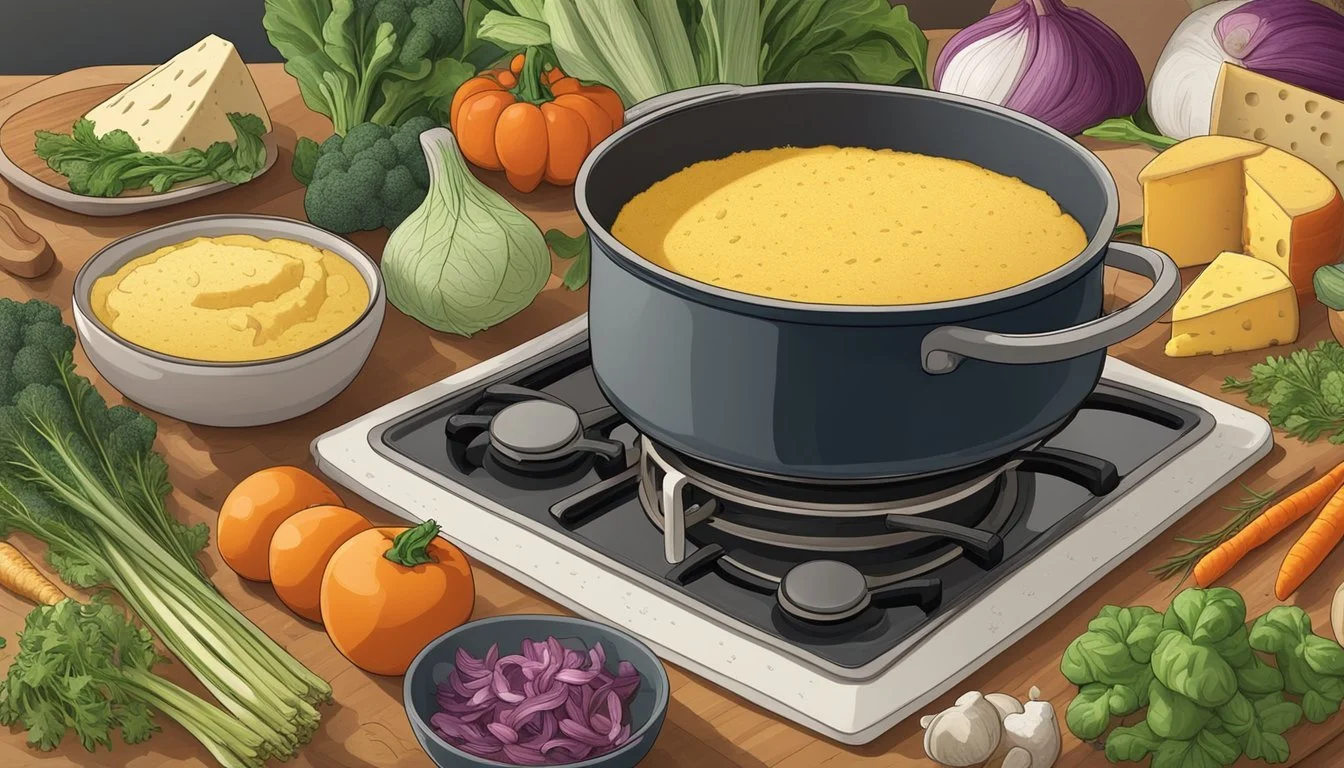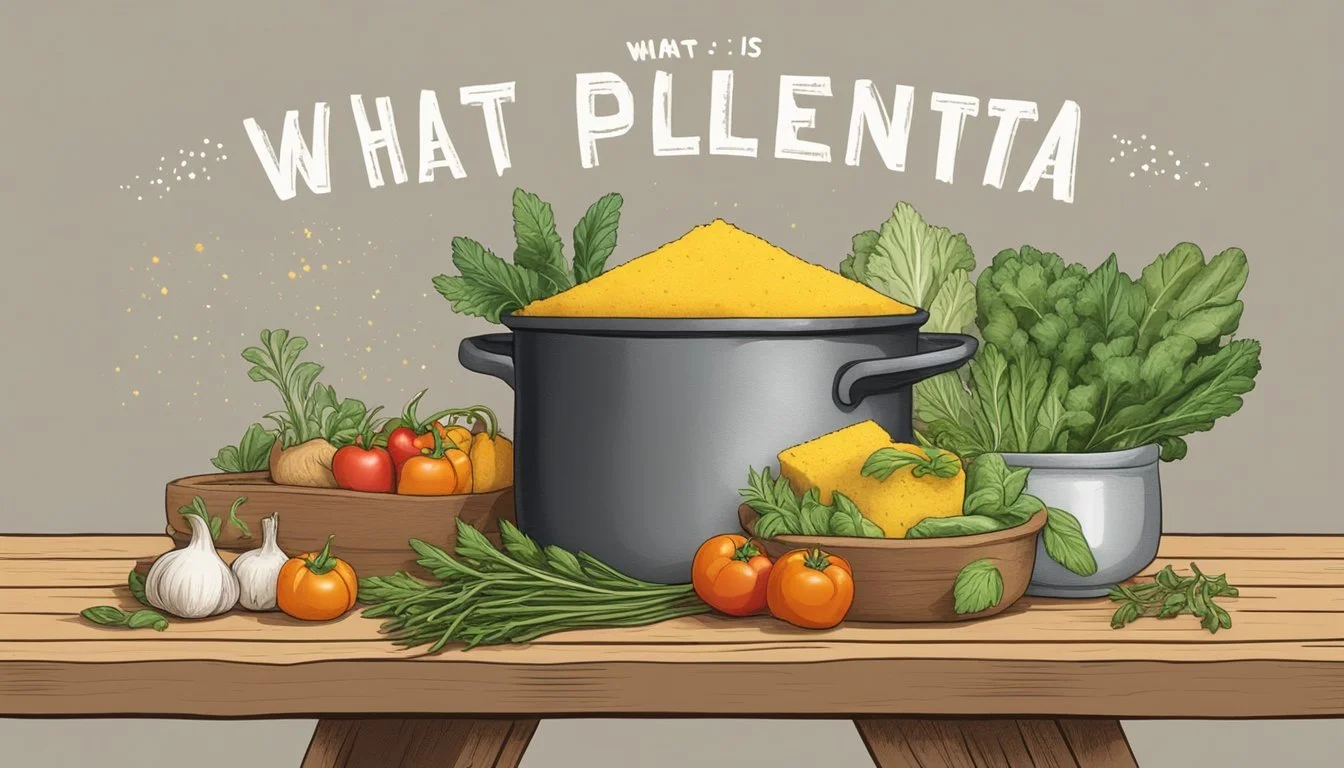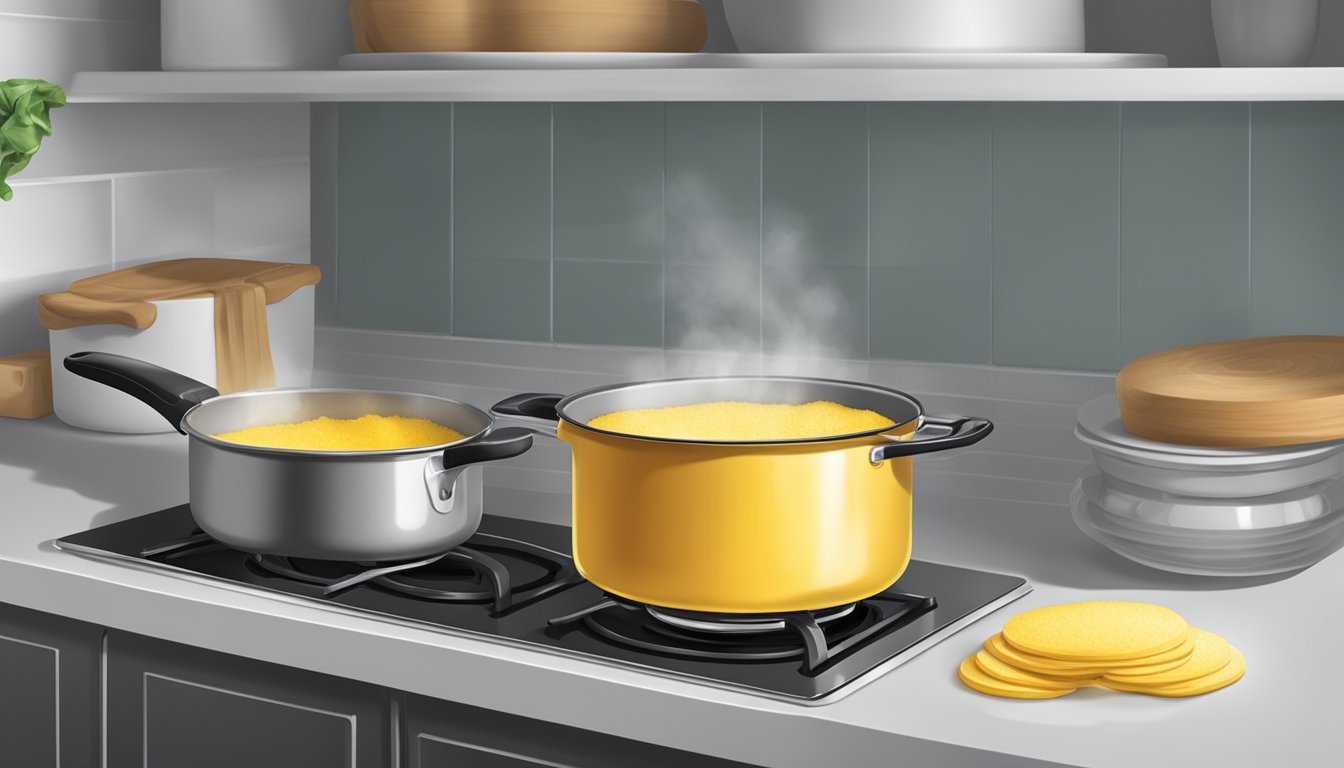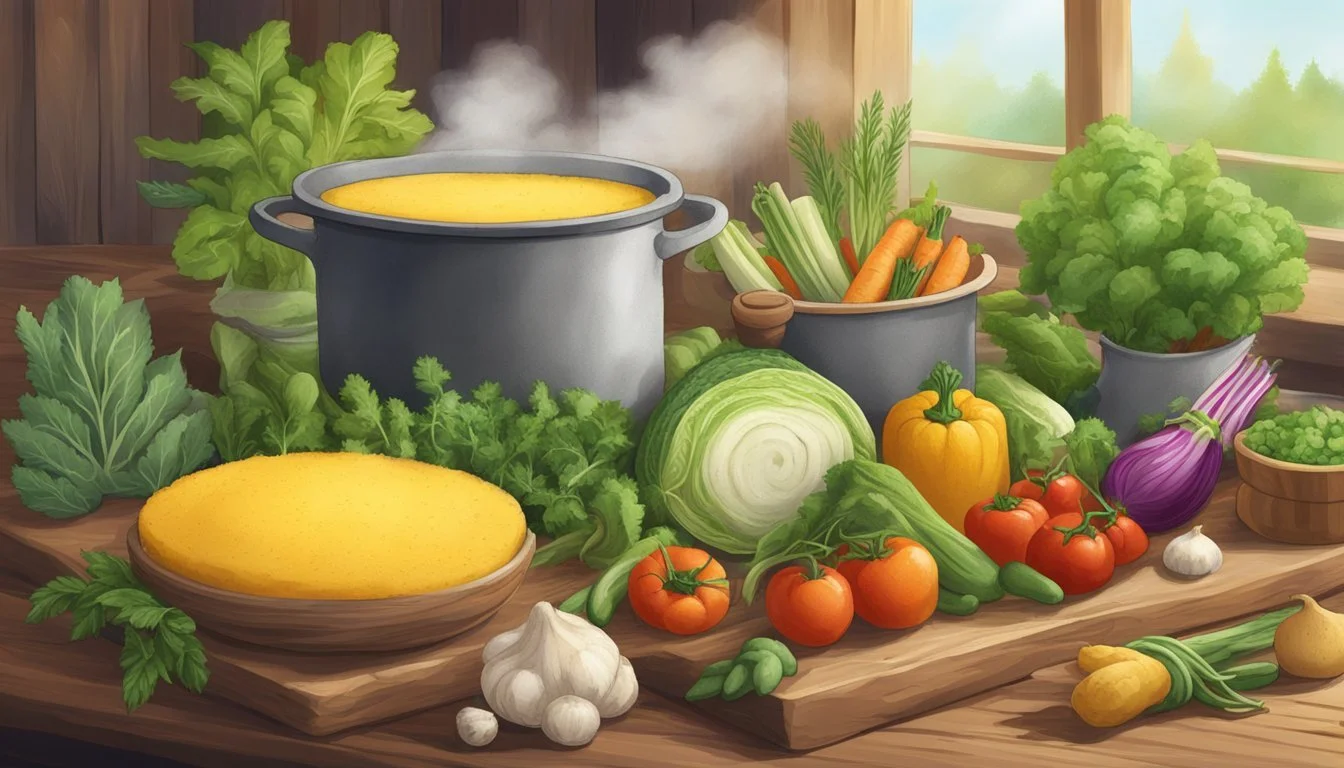Is Polenta Vegan?
Uncovering the Truth About This Classic Dish
Polenta, a traditional Italian staple, is a dish made from coarsely ground cornmeal. Its simplicity lends itself well to dietary preferences, including veganism. At its core, polenta consists of ground corn, water, and salt, marking it as naturally vegan. This aligns with a plant-based diet, which excludes all animal products.
However, polenta's vegan status can be compromised depending on preparation methods and added ingredients. It is not uncommon for polenta to be enriched with butter, cheese, or milk, which are not vegan-friendly. Therefore, individuals following a strict vegan diet should be vigilant when dining out or purchasing ready-made polenta. Homemade polenta can easily maintain its vegan integrity by opting for plant-based add-ons like vegan butter or nutritional yeast, ensuring the final dish aligns with vegan principles.
What Is Polenta?
Polenta is a versatile dish made from boiled cornmeal, originating from Northern Italy. It is known for its gluten-free quality and high fiber content, making it both a nutritious and affordable staple food.
Polenta vs. Grits
Polenta and grits are similar yet distinct dishes that both come from ground corn. Polenta, made from ground flint corn, has a coarser texture and is yellow in color. It is traditionally Italian and often served as a warm porridge or cooled and solidified into a loaf that can be baked, fried, or grilled. In contrast, grits originate from the Americas and are usually made from ground white dent corn, known as hominy. They have a finer, softer texture when cooked and are a classic dish in Southern United States cuisine.
Origins of Polenta
The origin of polenta can be traced back to Northern Italy, where it was a staple food for the poor, primarily due to its affordability and availability. It has since become a beloved part of Italian cuisine, with its history intertwined with the agricultural practices of the region. The use of cornmeal, which is naturally gluten-free, makes it an ideal dish for those with gluten sensitivities. Over time, polenta has gained international recognition, not just as a peasant food, but as a versatile base that can be enriched with various sauces and accompaniments.
Understanding Veganism
When exploring whether a food such as polenta is vegan, one must have a clear understanding of what veganism entails. This involves a set of dietary choices that exclude animal products and are motivated by various reasons, such as ethics and health.
What Makes a Food Vegan?
Vegan foods are those that do not contain any animal products or by-products. A food is considered vegan if it adheres to the following criteria:
Plant-based: It should originate from plant sources, whether fruits, vegetables, grains, nuts, seeds, or legumes.
Free from animal derivatives: No ingredients such as meat, poultry, fish, dairy, eggs, honey, or gelatin, which are derivatives of animals.
Dairy products like milk, cheese, and butter are non-vegan due to their origin from animals. However, there are plant-based alternatives such as almond milk, cashew cheese, and coconut butter that are vegan-friendly.
The choice to be vegan can stem from ethical considerations, with proponents eschewing products tied to animal cruelty or environmental damage. Others may opt for veganism due to health considerations, such as allergies to dairy or the desire to reduce the risk of certain diseases.
A vegan must carefully read labels and inquire about food preparation methods, especially when dining out, to ensure that no animal products are included implicitly. This is relevant for dishes like polenta, which may be vegan in its base form but often prepared with non-vegan ingredients like butter and cheese in restaurants.
Polenta Ingredients
Polenta is traditionally a simple dish with minimal ingredients, but variations can include non-vegan additives. Awareness of these ingredients is crucial for those following a vegan diet.
Basic Ingredients of Polenta
Cornmeal: The foundation of polenta is cornmeal, specifically a coarsely ground variant that can range in texture from fine to coarse.
Water or Broth: To cook the cornmeal, it's typically boiled in water, although vegetable broth can be used for extra flavor.
Salt: A critical seasoning that enhances the cornmeal's natural flavor.
Common Non-Vegan Additives
Some traditional polenta recipes may incorporate additives that are not vegan-friendly. These can include:
Dairy Butter: Often added to enhance richness and mouthfeel.
Milk/Cream: Sometimes used in place of water for creaminess.
Cheese: Frequently stirred into polenta for added flavor and texture.
Vegan Butter or Olive Oil: These can be used to replicate the richness that dairy butter provides.
Dairy-Free Milk: Oat, almond, or soy milk can serve as vegan substitutes for cow's milk or cream.
Preparing Vegan Polenta
Polenta, traditionally made from cornmeal and water, serves as a versatile dish that can be prepared vegan with ease. Here's how to ensure it stays vegan and delicious.
Vegan Polenta Recipes
A basic vegan polenta recipe requires only a few ingredients: cornmeal, water or vegetable broth, and a pinch of salt. To enrich the flavor, one can add vegan butter or olive oil, and for added creaminess, incorporate nutritional yeast. To prepare, one must boil the liquid, then gradually whisk in the cornmeal. Continual stirring is key to preventing lumps.
For a standard recipe, the ratio of liquid to cornmeal typically falls around 4:1, which may vary depending on the desired consistency. Adding ingredients like garlic, vegan parmesan, or fresh herbs can elevate the dish.
Cooking Techniques and Tips
The stovetop is the traditional method for making polenta, involving a steady simmer and frequent stirring to achieve the right texture. Creamy vegan polenta usually cooks between 15 to 30 minutes. It's essential to slowly add the cornmeal while whisking vigorously to prevent lumps.
For those in a hurry, instant polenta is an option and much quicker to prepare.
Prior to serving, seasoning with salt and pepper, or stirring in vegan-friendly ingredients like vegan butter or nutritional yeast can enhance the flavor.
Leftover polenta can be stored and later pan-fried for a delightfully different texture.
Vegan Polenta Variations
Polenta is incredibly adaptable and pairs well with various sauces and toppings. One popular variant includes topping creamy polenta with a mix of sautéed mushrooms, kale, or other vegetables, drizzled with a savory sauce.
Servings: This will depend on the quantity of ingredients used. A standard recipe can serve between 4 to 6 people.
Total time: Preparation can range from 20 minutes for instant varieties to upwards of 30 minutes for traditional stovetop polenta.
Vegan polenta can also be baked or grilled for unique textures and flavors.
Incorporating vegan parmesan can add a cheesy flavor without the dairy.
Season with bold spices or keep it simple with black pepper and herbs.
By following these specific instructions and tips, one can easily make a nourishing vegan polenta that's as versatile as it is satisfying.
Pairing and Serving Vegan Polenta
Vegan polenta serves as a versatile base in plant-based cuisine, lending itself to an array of pairings from simple side dishes to elaborate main courses. Its creamy texture and mild flavor make it an excellent canvas for a variety of vegan ingredients.
Side Dish Suggestions
When incorporating vegan polenta as a side dish, it complements an array of vegetables. To offer balanced nutrition and colorful presentation, one might consider:
Sautéed Vegetables: A mix of cremini mushrooms, spinach, and kale, sautéed until tender, makes a rich and flavorful addition.
Roasted Roots: Oven-roasted pumpkin, carrot, and other root vegetables, seasoned and caramelized, pair well with the soft consistency of polenta.
For an added touch of indulgence, one can sprinkle vegan parmesan cheese over the polenta just before serving.
Main Course Ideas
As a main course, polenta can be elevated with more substantial toppings or cooked into textured dishes such as:
Polenta Risotto: Reinventing the traditional risotto using polenta grains instead of Arborio rice, incorporating mushrooms and vegetable stock for a hearty dish.
Polenta Cakes with Ratatouille: Crisp polenta cakes topped with a thick, herbed vegetable ratatouille (What wine goes well with ratatouille?) can serve as the centerpiece of a vegan meal.
Vegan polenta recipes provide seamless ways to incorporate plant-based alternatives into familiar dishes, offering both comfort and culinary diversity to the vegan diet.
Nutritional Profile of Polenta
Polenta is a versatile food with a straightforward nutritional composition, primarily made up of carbohydrates, with fiber and protein adding to its nutritional value. It contains a modest amount of calories and is naturally low in fat.
Health Benefits
Polenta, a cornmeal-based dish, is rich in carbohydrates, providing energy, and contains a decent amount of dietary fiber, which can aid in digestion and sustained satiety. Its protein content, although not as high as other sources, still contributes to muscle maintenance and repair. Polenta is low in fat, with practically no saturated fat, aligning with heart-healthy guidelines. Moreover, being naturally low in sodium and sugar, it can be a suitable component of a balanced diet. When prepared simply with water, it contains no simple sugars; the complex carbohydrates it provides release energy gradually.
Nutrient Amount per 125 grams Calories 80 kcal Carbohydrates ~17 grams Fiber ~2 grams Protein ~2 grams Fat <1 gram Saturated Fat 0g Sodium Minimal
Considerations for Dietary Balance
While polenta can be a healthy option, it should be accompanied by other foods to ensure a well-rounded intake of vitamins and minerals. On its own, it doesn't offer substantial amounts of vitamin A, vitamin C, calcium, or iron. However, it can serve as a base for including other ingredients rich in these nutrients to create a complete meal. One should also be mindful that the addition of ingredients like cheese or butter increases calories, fat, and saturated fat content. For those monitoring potassium intake, it's worth noting that polenta has this mineral, essential for heart function and muscle contraction.
Creative Ways to Enjoy Polenta
Polenta is a highly versatile dish that can be transformed into a plethora of savory vegan options, by utilizing a range of toppings and methods of preparation. It can be made creamy or baked into firmer textures, catering to a variety of palates and occasions.
Vegan Toppings and Additions
Vegan polenta shines when paired with the right toppings. A simple yet delicious approach is to incorporate spinach, sautéed mushrooms, and vegan parmesan, creating a flavorful ensemble. For those seeking a pop of freshness, basil and parsley serve as aromatic garnishes that heighten the taste experience. Adding depth to the dish, a drizzle of balsamic vinegar can offer a satisfying tang. Below are some specific suggestions:
Sautéed Mushrooms & Spinach: Garnish creamy polenta with rich mushrooms and wilted spinach.
Basil & Balsamic Reduction: Top baked polenta slices with fresh basil and a balsamic reduction for a burst of flavor.
Vegan Parmesan: Sprinkle vegan parmesan over the polenta for a cheeseful finish.
Innovative Polenta Dishes
Beyond its traditional creamy form, polenta serves as a base for innovative plant-based dishes. One can craft a vegan polenta recipe that involves baking firm slices to use as a swap for pasta in a layered creation, or cutting polenta into fries and frying for a crispy, snackable treat.
Baked Polenta Fries: Cut polenta into sticks, bake until golden, and serve with your favorite vegan dipping sauce.
Polenta Layered with Vegan Ragù: Use baked slices of polenta as an alternative to pasta sheets, layering with a rich vegan ragù and baking until bubbly.
Creamy Pumpkin Polenta: Stir pumpkin puree into creamy polenta for an autumnal twist, providing both nutrition and a satisfying flavor.
By experimenting with these condiments and cooking methods, one can achieve delightful variations of polenta that are sure to impress any palate.
Storing and Reheating Polenta
When it comes to preserving leftover polenta, maintaining its creamy consistency is paramount. It should be stored in an airtight container and refrigerated, where it can last for up to 5 days. As polenta cools, it tends to solidify, so it's crucial to store it properly to retain its moisture.
Reheating Leftover Polenta:
To reheat, one could utilize either a stovetop or a microwave. A stovetop is preferred for achieving a creamy texture akin to its original state.
Stovetop Method:
Transfer polenta to a saucepan.
Add a small amount of liquid (water or dairy-free milk if keeping vegan).
Reheat over low heat, stirring frequently.
Microwave Method:
Place polenta in a microwave-safe dish.
Sprinkle water or dairy-free milk over the top.
Cover and microwave, stirring occasionally, until heated through.
The key is to introduce just enough liquid to restore its creamy texture without making it runny. One should adjust the amount of liquid based on the quantity of polenta and desired consistency. It's also essential to keep the temperature low and stir regularly during reheating; this helps to evenly distribute the heat and moisture.
For those adhering to a vegan diet, it is vital to use dairy-free options when adding liquid to leftover polenta. Water, vegetable broth, or plant-based milks are excellent alternatives to retain creaminess without the use of dairy.
Frequently Asked Questions
In this section, we explore some common inquiries regarding polenta, focusing on its suitability for various dietary needs and its place within food categories.
Is Polenta Gluten-Free?
Polenta, made from ground cornmeal, is naturally gluten-free. This grain-based dish delivers a good source of fiber and can be a staple in gluten-free diets. Consumers should ensure cross-contamination is avoided during preparation if they are particularly sensitive to gluten.
Can Polenta Be Considered Fast Food?
Polenta is not traditionally categorized as fast food. Its prep time and cook time vary; however, simple recipes can offer a quick course fitting for busy occasions. It's comparable to grits in its easy preparation but typically does not fall under the fast food umbrella due to its home-cooked nature.
Is Polenta Suitable for All Vegan Diets?
Fundamentally, polenta is vegan, consisting of cornmeal and water. Nevertheless, in some cuisines, it might be enriched with non-vegan ingredients like butter or cheese. Vegans should verify ingredients when dining out or purchasing pre-made polenta to ensure it aligns with a vegan diet.
Conclusion
Polenta, a dish rooted in Italian cuisine, typically consists of coarsely ground cornmeal. It is fundamentally vegan, as its core ingredient is plant-based. However, one should exercise caution with restaurant versions, as they often incorporate non-vegan items like butter and cheese. For those preparing polenta at home, selecting pure cornmeal and vegan-friendly ingredients ensures that the dish remains suitable for vegan diets.
Nutritionally, polenta can be a wise choice. It may be considered healthy, especially when topped with nutrient-rich vegetables such as mushrooms, which can enhance the dish with both flavor and substance. Professional nutritionists may advocate for such combinations, appreciating the balance of grains and vegetables.
On occasions that call for a delicious yet healthy option, vegan polenta can be an excellent choice. This versatile dish can be served creamy or allowed to cool and solidify, then sliced and baked or grilled. Whether for a simple family dinner or a special event, vegan polenta's adaptability makes it an appealing addition to any meal.
It's fundamental to ensure that all components of polenta are vegan by checking labels or inquiring at establishments. As with any dietary preference or restriction, consulting with a professional nutritionist can provide personalized guidance to incorporate polenta into one's feeding regimen in a manner that aligns with health goals and ethical considerations.
References and Resources
When researching whether polenta is vegan, individuals can find a wealth of information from various sources. It's beneficial to consult a variety of references to get a comprehensive understanding.
Books and Journals:
Nutritionists and food scientists may publish work in books and peer-reviewed journals that can give an authoritative perspective on polenta's nutritional profile and its place in a vegan diet.
Websites:
Online resources including Minimalist Baker offer recipes and procedures for preparing vegan polenta dishes, emphasizing home cooking and the use of cruelty-free ingredients.
The World of Vegan website provides detailed cooking instructions, which cater to those interested in plant-based diets seeking to include dishes like polenta.
Cooking Guides:
Chef-oriented sites such as Chef's Resource supply an assortment of vegan polenta recipes, allowing home chefs to experiment with various culinary techniques.
Databases:
Nutritional databases can be consulted for detailed information on the ingredients in standard polenta and potential non-vegan additives.
Online Communities:
Forums and social media platforms help to connect individuals with experienced vegan chefs who frequently share their adaptations of traditional recipes to fit a vegan lifestyle.
Below is a sample table that individuals can use to categorize their resources:
Resource Type Examples Use-Cases Books/Journals Nutritional Science Publications Understanding polenta's nutritional value Websites Minimalist Baker, World of Vegan Finding vegan polenta recipes Cooking Guides Chef's Resource Culinary techniques for vegan polenta Databases Nutritional Information Repositories Ingredients and vegan suitability checking Communities Vegan Cooking Forums, Social Media Groups Sharing experiences and knowledge
Professional nutritionists can be particularly valuable references for ascertaining the suitability of ingredients used in restaurant preparations of polenta.






